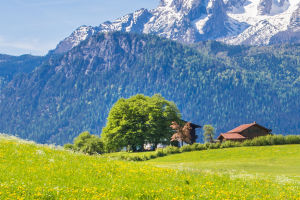Have you ever dreamt of sailing the vast, open seas, navigating your way around the globe with nothing but the wind at your back and the horizon as your guide?
Sailing around the world might sound like a massive undertaking, but with the right planning and route, it can be a manageable and incredibly rewarding experience.
In this article, we'll guide you through two popular and relatively straightforward routes for circumnavigation. We'll cover everything from the best starting points and suggested stops to weather patterns.
1. The Trade Winds Route
The Trade Winds Route is designed to take advantage of the consistent and favorable trade winds, making for a smoother and more predictable journey. This route typically starts in the Canary Islands, crosses the Atlantic to the Caribbean, and continues through the Panama Canal into the Pacific Ocean. From there, sailors head to the Galapagos Islands, then westward across the South Pacific to places like the Marquesas, Tahiti, Tonga, and Fiji before reaching New Zealand and Australia. The route then proceeds to Indonesia, the Seychelles, Madagascar, South Africa, and finally to Brazil before returning to the Caribbean.
Start/End: Canary Islands to the Caribbean via the Panama Canal.
Duration: 12 to 18 months.
Stops: Canary Islands, Cape Verde, Caribbean (various islands), Panama, Galapagos Islands, Marquesas, Tahiti (French Polynesia), Tonga, Fiji, New Zealand, Australia, Indonesia, Seychelles, Madagascar, South Africa, Brazil.
Weather: This route enjoys favorable trade winds across the Atlantic and Pacific Oceans. However, it is crucial to avoid cyclone seasons in the Pacific and Indian Oceans, which occur from November to April. The trade winds provide a reliable wind pattern, making navigation simpler and more efficient.
2. The Southern Hemisphere Route
This route offers a diverse array of landscapes and cultural experiences across the southern hemisphere. Starting in Australia, sailors head to New Zealand and then across the South Pacific to French Polynesia, the Cook Islands, Tonga, and Fiji. From there, the journey continues to the Panama Canal, then the Galapagos Islands, and westward to the Marquesas and Tahiti. After crossing the South Pacific, the route heads down to Chile and Argentina, then across to Brazil and up to South Africa, before finally returning to Australia.
Start/End: Australia to South Africa via the Panama Canal.
Duration: 18 to 24 months.
Stops: Australia, New Zealand, French Polynesia, Cook Islands, Tonga, Fiji, Panama, Galapagos Islands, Marquesas, Tahiti, Chile, Argentina, Brazil, South Africa.
Weather: Predominantly favorable with trade winds, but the Southern Ocean segments, especially around Cape Horn, can be challenging with stronger winds and larger swells. This route requires careful planning to avoid the storm seasons and to ensure safe passage through more treacherous waters.
Choose the right route, prepare thoroughly, and embark on a journey that promises adventure and unforgettable experiences!


